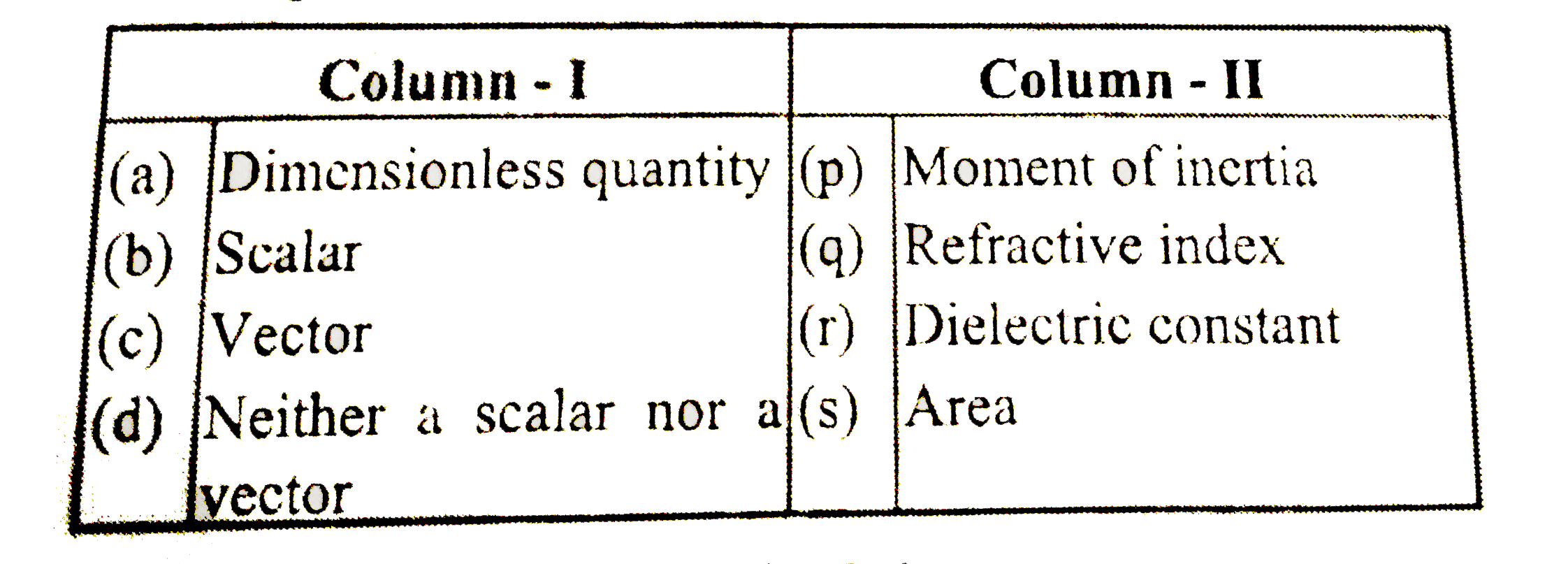PHYSICAL QUANTITY AND IT'S TYPES
Step-by-Step Solution:
Step 1: Understanding Physical Quantity
- A physical quantity is something that can be measured, and it consists of two components: a numerical value (magnitude) and a unit. For example, if you measure sugar, you might say you have 1 kg of sugar. Here, "1" is the numerical value, and "kg" is the unit.
Step 2: Components of Physical Quantity
- The physical quantity can be expressed as:
Physical Quantity=Magnitude×Unit
This means that every physical quantity can be represented as a number multiplied by a unit.
Step 3: Types of Physical Quantities
- Physical quantities can be classified into three main types:
1. Ratio: These are quantities that can be expressed as a ratio and do not have units. An example is the refractive index, which is the ratio of the speed of light in a vacuum to the speed of light in a medium.
2. Scalar: These quantities have only magnitude and no direction. Examples include time, mass, and temperature.
3. Vector: These quantities have both magnitude and direction. Examples include force, velocity, and acceleration.
Step 4: Examples of Each Type
- Ratio: The refractive index (e.g., μ=1.3).
- Scalar: Time (e.g., 5 seconds), mass (e.g., 2 kg), work done (e.g., 10 Joules).
- Vector: Force (e.g., 10 Newtons to the east), velocity (e.g., 60 km/h north), acceleration (e.g., 9.8 m/s² downward).
Step 5: Summary
- A physical quantity is defined by its magnitude and unit. It can be categorized into ratios, scalars, and vectors based on whether it has units, direction, or both.
- A physical quantity is something that can be measured, and it consists of two components: a numerical value (magnitude) and a unit. For example, if you measure sugar, you might say you have 1 kg of sugar. Here, "1" is the numerical value, and "kg" is the unit.
- The physical quantity can be expressed as:
Physical Quantity=Magnitude×Unit
This means that every physical quantity can be represented as a number multiplied by a unit.
- Physical quantities can be classified into three main types:
1. Ratio: These are quantities that can be expressed as a ratio and do not have units. An example is the refractive index, which is the ratio of the speed of light in a vacuum to the speed of light in a medium.
2. Scalar: These quantities have only magnitude and no direction. Examples include time, mass, and temperature.
3. Vector: These quantities have both magnitude and direction. Examples include force, velocity, and acceleration.
- Ratio: The refractive index (e.g., μ=1.3).
- Scalar: Time (e.g., 5 seconds), mass (e.g., 2 kg), work done (e.g., 10 Joules).
- Vector: Force (e.g., 10 Newtons to the east), velocity (e.g., 60 km/h north), acceleration (e.g., 9.8 m/s² downward).
- A physical quantity is defined by its magnitude and unit. It can be categorized into ratios, scalars, and vectors based on whether it has units, direction, or both.
Similar Questions
Knowledge Check
If A and B are two physical quantities having different dimensions then which of the following can denote a new physical quantity?
AA+A3BBexp(−AB)CAB2DAB4The dimensional formula of physical quantity is [MaLbTc].Then that physical quantity is
Asurface tension if a=1,b=1,c=-2Bforce if a=1,b=1,c=2Cangular frequency if a=0,b=0,c=-1Dspring constant if a=1,b=-1,c=-2
Physical Quantities|Types Of Physical Quantity|Fundamental Quantity|Derived Quantity|Supplementary Quantity|Unit
View SolutionBasic Mathematics|Physical Quantities |Scalar Quantities |Vector Quantities |Vector Quantities Representation Of Vectors |Types Of Vectors |Types Of Vectors Addition Of Two Vectors |Practice Exercise |Summary
View SolutionPhysical Quantities||Fundamental Physical Quantities||Supplementary Physical Quantities||Derived Physical Quantities
View SolutionIs J a physical quantity ?
View SolutionSome categories of physical quantities are given in Column-I. Match the physical quantities in Column -II with the categories in Column -I.

View SolutionPhysical Quantities||Fundamental||Supplement||Derived Physical Quantities System OF Unit||Base Unit||Derived Units
View Solution
